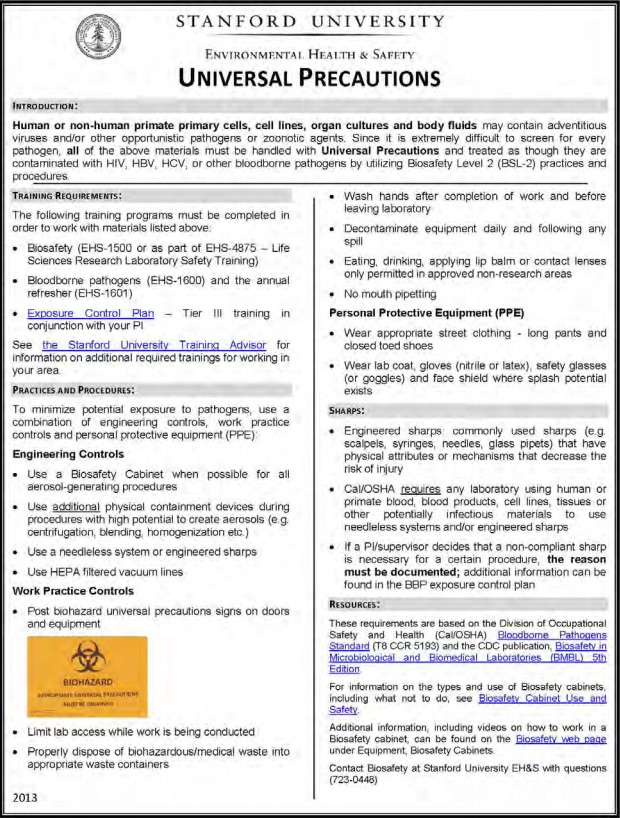Biosafety Level 3 (BSL3) laboratories involve research using agents that are associated with serious or lethal human disease for which preventative or therapeutic treatments may be available. These laboratories are designed to protect individuals and the public through the containment of the agents used by both engineering and administrative controls. Any waste generated from these facilities must be sterilized before disposal outside of the facility. Access to these laboratories are tightly controlled and involve a rigorous mentored training process designed by the laboratory to ensure that individuals are both capable and highly knowledgeable in all procedures involving the agent and facility in use. (Figure 1)
The primary hazards to personnel working with BSL – 3 agents involve autoinoculation, exposure to aerosols and ingestion. In order to prevent infection through these modes of transmission, containment devices such as a biosafety cabinet should be used along with procedures and practices that are thoroughly vetted before work begins. In addition to primary engineering and administrative controls, the facility itself must meet strict design guidelines to insure the environment and public are protected from any accidental release inside the facility.
Due to the intrinsic risk associated with work at BSL – 3, each researcher’s knowledge and ability must be evaluated individually, with a gradient of experience and proficiency expected. All researchers must demonstrate competency with a minimum base skill set along with being secure in their potential to ask questions and express concerns. All labs should have an internal expert knowledge source to serve as a mentor to ensure specific skills are passed on.
To ensure the safety of all researchers and the environment, the APB requires BSL – 3 researchers to demonstrate appropriate theoretical knowledge and practical skillsets in the following areas:
- Adhering to general lab safety procedures, including donning and doffing PPE.
- Setting up, cleaning out, and properly using the biosafety cabinets.
- Bringing materials into and out of the biosafety cabinet.
- Growing and manipulating cultures safely, with emphasis on the importance of avoiding aerosol generation during all operations.
- Performing the essential procedures required of most protocols, such as centrifugation, plating and incubating.
- Using the autoclave, disposing of waste.
- Emergency management and procedures.
Training should be thoroughly documented and consist of multiple sessions that culminate in a practical test to assess the skill of the researcher. These records should be kept in the lab and sent to the Biosafety group for evaluation. The results for these tests will also serve as the basis for access to the BSL3 facility.
Formal training is strongly encouraged. There are a number of intensive BSL – 3 training courses offered across the country; please contact the Stanford Biosafety group to discuss what is best suited for individual needs.
Contact Biosafety if you are considering doing research with a BSL3 agent.

